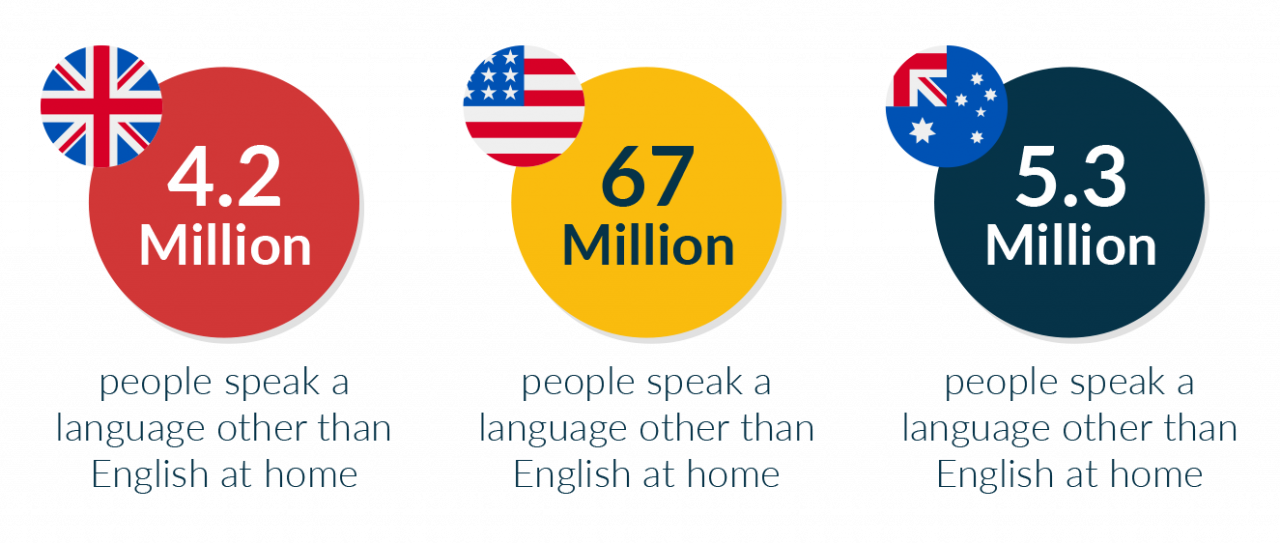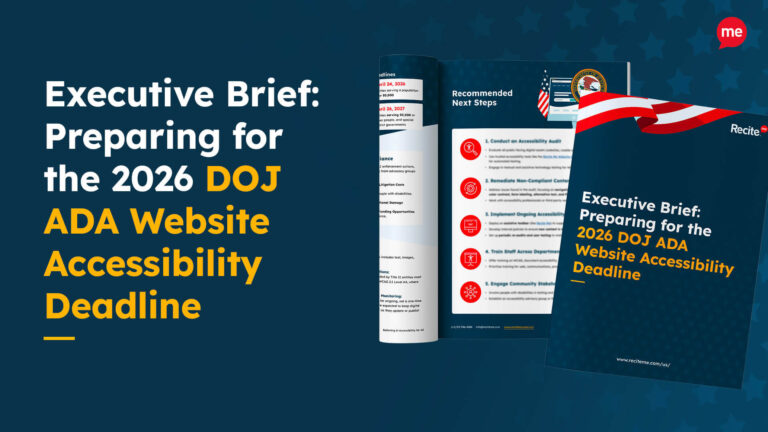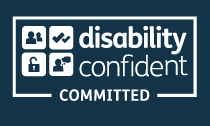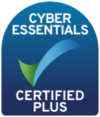When discussing inclusive experiences online, the Recite Me team is often asked about on-page translation and screen reader (text-to-speech) features. One of the most popular questions is “How accurate is the translation?”. The simple answer is that it depends on how well-written your website is, to begin with. But admittedly, that reply may raise more questions than it does answers! Here’s everything you need to know.
Providing on-page translation and text-to-speech functionality is a great way to make your website more accessible because:
Only around one in every four internet users speaks and reads in English (26%).
In a choice between similar products, 75% of consumers will select options where information is available in their language.
56% of online shoppers say having information in their language is more important than price.
If your website is written in English and you’re relying on machine translation to satisfy various linguistic needs, you need to be up-to-date with best practices and do more to actively improve the accuracy of your translated web content. Being fluent in English and French is something our senior sales executive, Bernie Petegou, has been asked about multiple times.
“It’s probably an obvious thing to say that the quality of the translation depends on the quality of the source text, but many people just don’t know how to write better translatable or ‘machine-friendly’ content.”
Bernie Petegou, Senior Sales Executive at Recite Me
Let’s start from the beginning…
What is Machine Translation Software?
Simply put, machine translation is a process of using computer software to translate text from one language to another without the need for human involvement. Machine translation software typically utilizes one of three translation methods:
Rules-based translation
Using dictionaries and language and grammar rules developed by linguistic experts, rule-based machine translation engines can be customized to fit specific niches or industries.
Statistical translation
Rather than relying on words and grammar rules, statistical translation converts based on machine exposure to a large cache of pre-existing human translations.
Neural Machine translation
This increasingly popular method is used by industry giants like Google, Microsoft, and Amazon. Powerful artificial intelligence (AI) models essentially teach themselves to translate by using an extensive neural network.
Pros and Cons of Machine Translation Accuracy
You may be wondering how the machine translation system compares to human translation. Here’s a list of pros and cons.
Machine Translation Pros
Speed – Machine translation can process entire pages and documents in seconds.
Functionality – A single tool can handle translation tasks in multiple languages.
Scale – There’s little limitation to the number of languages the tool can work with.
Low Cost – The limited need for human involvement reduces payroll and employee benefit overheads. Plus, recruitment costs are reduced as there’s no need to vet and hire translators.
Automated Input – Machine translation tools can memorize key terms and be programmed to reuse them wherever they might fit.
Innovation – Translation technology is constantly evolving and improving.
Machine Translation Cons
Context – Machines can’t translate context or interpret puns, metaphors, slogans, or understand idiomatic differences as well as a human.
Consistency – The consistency of translation can vary across different languages.
Accuracy – Machine translation is generally slightly lower than human translation accuracy.
Writing Machine-Friendly Content
As we highlighted earlier, the better your web copy is, to begin with, the less likely it is to confuse machine translation tools. The American Translators Association (ATA) has compiled a handy guide about writing for machine translation based on real-life experiences and examples. To guarantee the highest level of accuracy when using our assistive technology to translate your website, we recommend following their list of best practices:
Language – Keep it clear, concise, and consistent for the best translation results.
Terminology – Be specific in your wording and avoid synonyms that could result in different translations of the same words or phrases in other languages.
Pronoun use – Using a noun rather than a pronoun increases clarity, especially if you’re translating into languages like French, Spanish and Italian, where words like ‘it’ can be mistranslated into the wrong gender and cause confusion.
Abbreviations and acronyms – Avoid both wherever possible. Either write the name or phrase in full or use the full name or title with the acronym/abbreviation in brackets afterward.
Sentence length – Avoid very short sentences of 5 words or less, very long sentences of 60 words or more, and keep each sentence relevant to one topic or idea.
Line breaks – Machine translation tools treat all parts of a title or heading separately, so avoid line breaks that could cause text to be split into two separate titles or headings rather than one.
Punctuation – Proper punctuation gives machines clues about meaning, so accuracy and consistency when using hyphens, quotation marks, bullet points, etc., is paramount.
Capital letters – Avoid writing whole words, titles, or sentences in capitals because translation technology is less accurate when processing capital letters.
Symbols – While some signs and symbols are universal (like the $ sign), others (like the & sign) are not. If in doubt, always type the word rather than using a symbol.
Headers – Use automatic heading styles in MS Word to ensure content will be translated the same way in the table of contents in other languages.
Download the complete ATA guides with examples.

Recite Me Translation
At Recite Me, we have adopted Google Translate as our chosen machine translation engine software based on several factors:
A hybrid model designed for optimum accuracy
Web crawl capabilities that focus on precision rather than recall
Finely tuned tech that is trained on noisy data and fine-tuned on clean data
Back-translation, which is particularly useful for low-resource languages where parallel data is scarce
M4 modeling that allows for transfer learning on a massive scale
You can read more about the development of machine translation models and the recent advances of Google translate on the Google AI blog.
By partnering with Google, the Recite Me website accessibility widget can quickly and easily translate web content into over 100 on-page languages and 65 text-to-speech languages. You can download the complete list here
Our data over the last 12 months shows that:
Our text-to-speech software vocalized 35.5 million pieces of content
Our on-page translation feature was used to translate nearly 15 million web pages
The most popular languages across our translation features were Spanish, Danish, French, Moldavian, Chinese, Polish, Afrikaans, and Italian.
Over the last 6 months, we have added Urdu and US Spanish (South American) to our toolbar, and also made improvements to the way the toolbar manages languages like Arabic and Hebrew which are formatted right to left.
If needed, our team can work with clients using human translation on specific sections or pages. This can be helpful for businesses that operate in niche industries using special or unusual terminology. It can also be advantageous for medical, legal, and financial companies, etc., where 100% accuracy is crucial. A range of other language optimization techniques are also available, and over time, Recite Me has updated hundreds of single words and phrases across all languages to improve pronunciation.
The customer feedback from our clients shows the power of offering a tool that includes translation options:
“I’m a member of an Eastern European community support group and regularly use the Recite Me toolbar to translate online content. I can access information with various adjustments, including translation in many languages, some of them even in audio versions. I can also change colors, text, and use other on-screen tools. I have had a very good experience working with Beyond Housing since they upgraded their website with new tools as part of their programme, ‘Believing in Accessibility for All’.”
Anda, a Beyond Housing customer from Latvia
Machine Translation: Key Takeaways
Of course, the language trends for individual businesses will differ depending on your industry and where your company is based. The key takeaway is that on-page and text-to-speech language translation technology is a game-changer when it comes to reaching a wider audience – whether at home or overseas.
“When your site is available in multiple languages, you attract the attention of an international market. You also become identified as a global brand which elevates your status and improves your reputation. Consumers tend to trust global brands more than ones that are only known locally.”
Nick McGuire, E-commerce specialist and blogger
Some smaller and more local businesses are quick to dismiss the need for translation features. However, making your products and services available in other languages is a good idea even within the domestic market. For example, did you know that:
In the US, 67 million people speak a language other than English at home
In the UK, 4.2 million people speak a language other than English at home
In Australia, 5.3 million people speak a language other than English at home
Finally, assistive technology is a fantastic way to offer translation options while also tapping into additional features that help customers with disabilities. Other features of the Recite Me toolbar support a range of physical, visual, auditory, cognitive, and neurological conditions by offering:
Font personalization for size, typeface, and color
A mask screen tool to help with focus
A ruler to make reading easier.
A built-in dictionary and thesaurus
Audio file content downloads as an alternative to real-time reading
Customized and accessible PDF downloads
The ability to strip away image carousels and graphics
Learn More
If you’d like further information about Recite Me translation features (or any other aspect of our assistive technology toolbar), you’re welcome to contact our team anytime for more details, advice, and recommendations for your website. Alternatively, you can book a live demo to see our toolbar in action or take a free scan of our web accessibility compliance checker.







